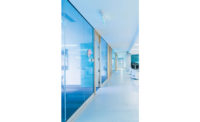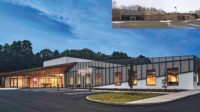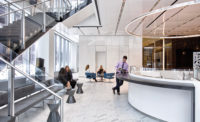As an alumna of Buro Happold and Thornton Tomasetti, engineer and architect Erleen Hatfield has worked on some of the most complex structures in the world. At Mercedes Benz Stadium in Atlanta, she managed a significant innovation: it was the first building in the United States to use ethylene tetrafluoroethylene (ETFE) on the building envelope.
“Because the building industry is slow to adopt new materials, incorporating ETFE was not an easy process,” Hatfield said.
The architects wanted a window at the east side of the stadium, which has a clear vertical span of over 100 feet with no stadium in that area to push back on. The use of glass—a material that is ten times heavier than ETFE—would have required more structure to support the additional weight. Using ETFE instead of glass allowed the supporting structure to be smaller and maximize the views.
Now the head of her own structural engineering firm, New York City-based Hatfield Group, Hatfield is currently working on a Woods Bagot-designed residential project in Brooklyn, 510 Driggs. It has green walls, another envelope feature that is gradually gaining traction in the industry.
Hatfield explains the challenges from a systems point of view. “Green walls typically have a sprinkler system to water them, with a dedicated plumbing line. Drainage is a concern that needs to be addressed. Getting water down to the ground can be tricky, as we don’t want dripping water or ugly pipes to show on the exterior. So we typically pipe drainage water back inside the wall cavity—a tactic we avoid in other places—which requires extra care in the design.”






Post a comment to this article
Report Abusive Comment